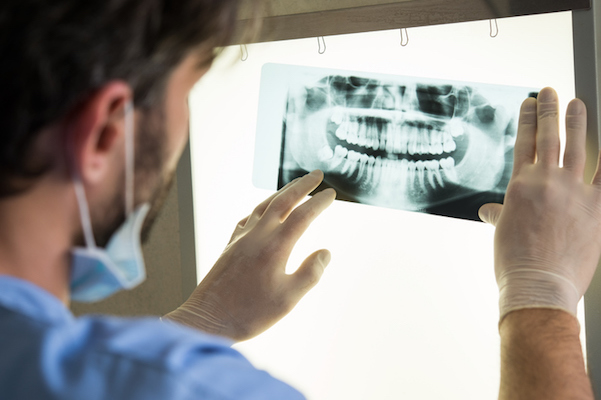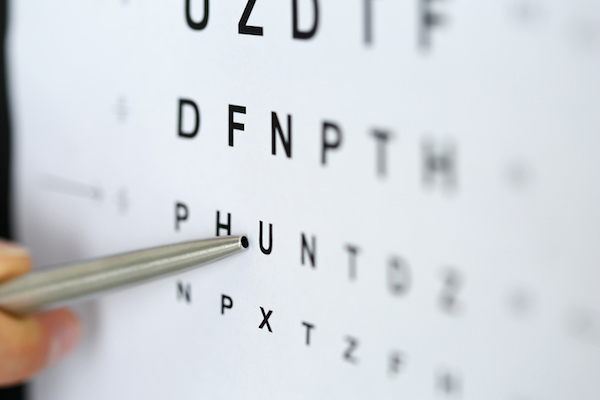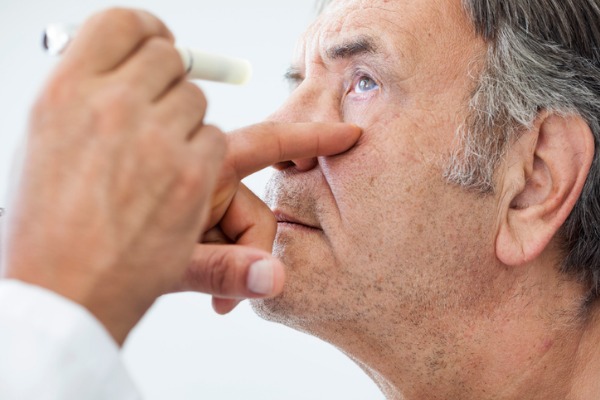
Dealing with Age-Related Macular Degeneration – (Part One)
Macular Degeneration is a leading cause of vision loss, affecting more than 10 million Americans
Moving forward, I’ve wanted to talk about Macular Degeneration (AMD) for quite some time. Without question, it’s one of the most debilitating eye diseases an eye care professional will come across.
A person suffering from AMD might realize a loss of central vision, which is critical to recognizing faces, or driving a car, or reading a book. AMD can progress quickly and suddenly so it needs to be addressed accordingly and treated as soon as possible.
On a personal note, my 97 year old (great) uncle is a WWII veteran who suffers from AMD. He’s legally blind as a result, but still lives independently, which is an excellent example of veteran will power (although someone checks on him once a day). Like many others of his generation, his eyesight may have been preserved if it wasn’t for outside factors.
Today, we know much more about AMD. But with every patient I examine, I think about how I wish better treatment was available for previous generations.
What is Macular Degeneration?
According to the American Macular Degeneration Foundation – “Macular Degeneration is a leading cause of vision loss, affecting more than 10 million Americans – more than cataracts and glaucoma combined.”
“At present, AMD is considered an incurable eye disease and is caused by the deterioration of the central portion of the retina.”
The National Eye Institute (NEI) explains AMD as – “a common eye condition and leading cause of vision loss among people age 60 and older. It causes damage to the macula, a small spot near the center of the retina and the part of the eye needed for sharp, central vision, which lets us see objects that are straight ahead.”
The two types of AMD are:
- Dry AMD – This type occurs when yellowish deposits (called drusen) are seen in the macula
- Wet AMD – This type occurs when fluid or blood is seen within the macula.
By the Numbers:
The following facts & statistics are highlights of a list compiled by the BrightFocus Foundation, which “supports research to end Alzheimer’s disease, macular degeneration, and glaucoma.”
- AMD is the leading cause of vision loss in Americans 60 years of age and older.
- Advanced AMD is the leading cause of irreversible blindness and visual impairment in the world.
- As many as 11 million people in the United States have some form of AMD (this number is expected to double to nearly 22 million by 2050).
- The number of people living with AMD is expected to reach 196 million worldwide by 2020 and increase to 288 million by 2040.
- The risk of getting advanced AMD increases from 2% for those ages 50- 59, to nearly 30% for those over the age of 75.
- Estimates of the global cost of visual impairment due to AMD is $343 billion, including $255 billion in direct health care costs.
- The dry form of AMD accounts for 90 percent of diagnosed cases.
- Wet AMD accounts for approximately 10 percent of cases, but results in 90 percent of legal blindness.
Symptoms & Risk Factors:
AMD often lacks symptoms in the early stages, but it can be diagnosed during an eye exam even before a patient notices any change in vision. As the disease progresses into deeper stages, the most common symptom is a sudden change in vision.
Other symptoms of AMD include:
- Blurry vision
- Distortion (images appear abnormally stretched or thinned/thickened)
- Straight lines may appear wavy (called metamorphopsia)
- Difficulty adjusting to light when going from dark to bright (or vice versa)
Common risk factors for AMD include:
- Smoking (the highest risk associated with AMD)
- Family history or genetics
- Heart disease or hypertension
- Poor diet
Live in Your OcularPrime:
In Part Two of Age-Related Macular Degeneration 101, I’ll go over Prevention, Diagnosis, Treatment Options and more.







